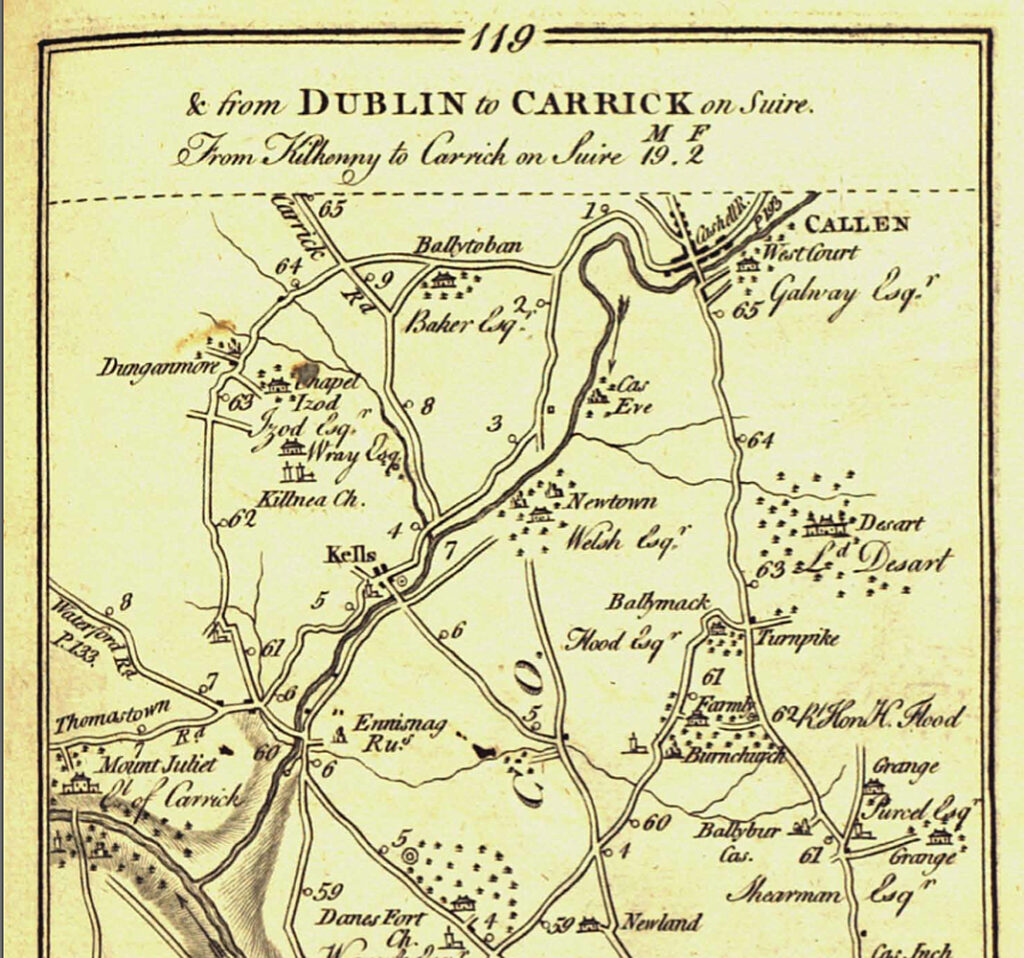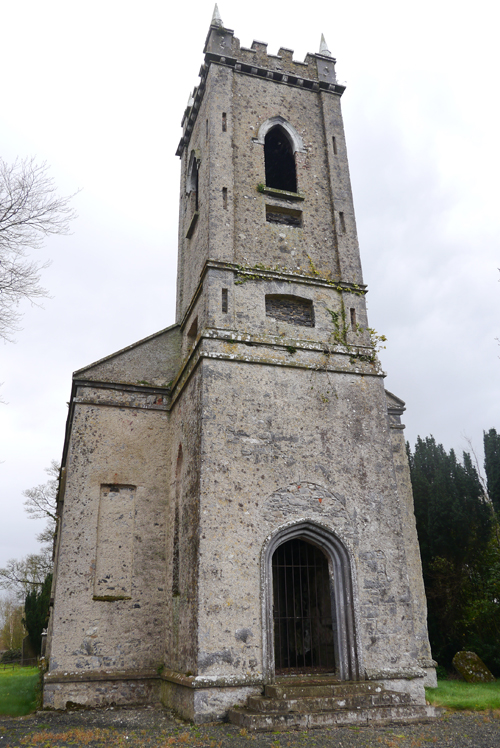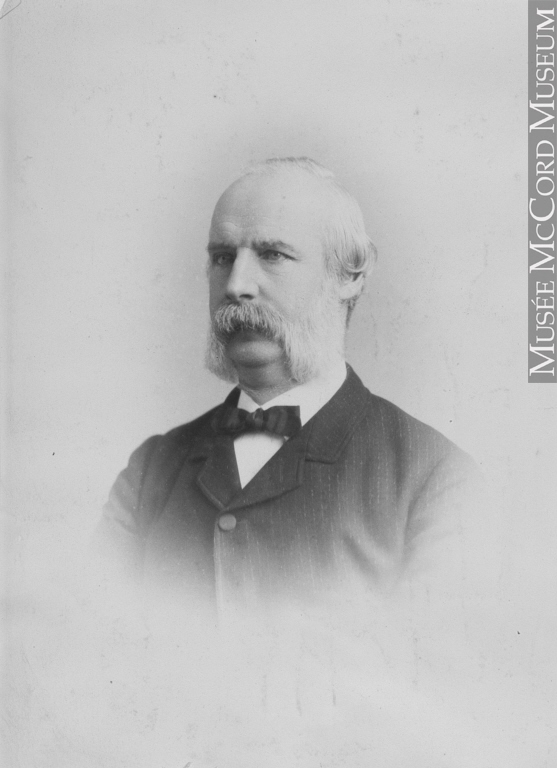In 2014, I wrote about the brick wall surrounding the Irish origins of my great-great grandmother Martha Bagnall Shearman.1 Thanks to the generosity of a new-found distant cousin, I have now demolished that brick wall, moved the family tree back another six generations and discovered additional Shearman family branches in New Zealand and the United States.
I knew that Martha Shearman was born in Waterford, Ireland, married Charles Francis Smithers there in 1844 and came to Canada three years later.2 Because of Charles’ career in banking, the Smithers family lived for several years in Brooklyn, New York, and I discovered that two of Martha’s brothers and a sister had also immigrated to Brooklyn. I knew nothing, however, about the Shearman family’s roots in Ireland.

I posted the article online and eventually Lorraine Elliott, who was born in New Zealand and lives in Australia, came across my blog. She contacted me to tell me that her ancestor Robert Clarke Shearman,3 a New Zealand policeman, was another of Martha’s siblings. The clue that helped convinced her that we were related was a photograph in her great-great-grandfather’s album identified as Maria Boate, Martha’s and Robert’s sister in Brooklyn.
Some years ago, Lorraine’s research led her to a genealogy of the Shearman family written in 1853 by John Francis Shearman (I’ll refer to him as JFS). He was a cousin of Martha’s and Robert’s, an amateur archaeologist and a Catholic priest. (Some of the Shearmans were Protestants, others converted to Catholicism.) This document is in the archives of the National University of Ireland at Maynooth, near Dublin. Lorraine sent me the notes she had on that document, along with some of her own research on the extended Shearman family.
The JFS genealogy takes the Shearmans back to the mid-17th century when Thomas Shearman (c 1610-1704) came to Ireland from England with Oliver Cromwell’s invasion forces. He then settled in Burnchurch, County Kilkenny, in southeast Ireland. Subsequent generations of Shearmans lived in and around Grange, not far from Kilkenny City.
Lorraine’s notes stated that Martha was one of 13 children, and that their parents were Thomas Shearman (c. 1785-1850) and his wife, Charlotte Bennett Clarke (no dates available).4 Her research suggested that Thomas lived in Dunkitt, Kilkenny, near the city of Waterford, but other sources say that he was from the nearby city of Waterford. Perhaps he lived in Dunkitt in his early life, then moved to the city.

I recently came across another Shearman genealogy on familysearch.org.5 This 15-page manuscript was written in 1863 by a member of another branch of the family, George Shearman (1818-1908) of Penn Yan, a small town in New York State. It was clearly based on the family history written by JFS 10 years earlier, and it added more detail about George’s line and had less information about mine. It listed Thomas Shearman and named his sons, but only mentioned that he also had five daughters.
All this information comes with a caveat: neither of these documents meets the requirements of genealogical proof standards. The names and dates of birth, marriage and death were probably based on family records and anecdotes and parish records that existed at the time, but today there are no official records in Ireland to back them up. Nevertheless, Shearman family members can be found in various cemeteries, old Irish city directories, newspaper articles, Tithe Applotment Books and indexes of wills. Kilkenny researcher Edward Law found numerous records pertaining to Grange House, home to my Shearman ancestors in County Kilkenny, and the librarian with the Kilkenny Archaeological Society, Rothe House, Kilkenny was extremely helpful in my search for traces of the family.
This article has also been posted on the collaborative blog https://genealogyensemble.com.
Photo Credits: Rothe House; Janice Hamilton
Footnotes:
- Janice Hamilton, “My Shearman Brick Wall”, Writing Up the Ancestors, Feb. 9, 2014, https://www.writinguptheancestors.ca/2014/02/my-shearman-brick-wall.html
- Janice Hamilton, “Waterford Cathedral: A Tale of Two Weddings”, Writing Up the Ancestors, June 8, 2016, https://www.writinguptheancestors.ca/2016/06/christ-church-cathedral-waterford-tale.html
- Robert S. Hill, “Shearman, Robert Clarke”, from the Dictionary of New Zealand Biography, Te Ara – the Encyclopedia of New Zealand, http://TeAra.got.nz/en/biographies/1s10/shearman-robert-clarke. Note that this article says Robert’s uncle was William Hobson, first governor of New Zealand; Lorraine has been unable to confirm that.
- Charlotte was the daughter of Waterford pewter manufacturer Charles Clarke and his wife “Miss Bennett, late of Bath.” This maternal line has now come to another brick wall.
- “Genealogy of the Shearmans”, prepared by George Shearman of Penn Yan, New York, c. 1863 https://familysearch.org/ark:/61903/3:1:939K-VQH2-8?mode=g&i=113&wc=9DWX-ZNL%3A1040900401%2C1040900901%3Fcc%3D1880619&cc=1880619

